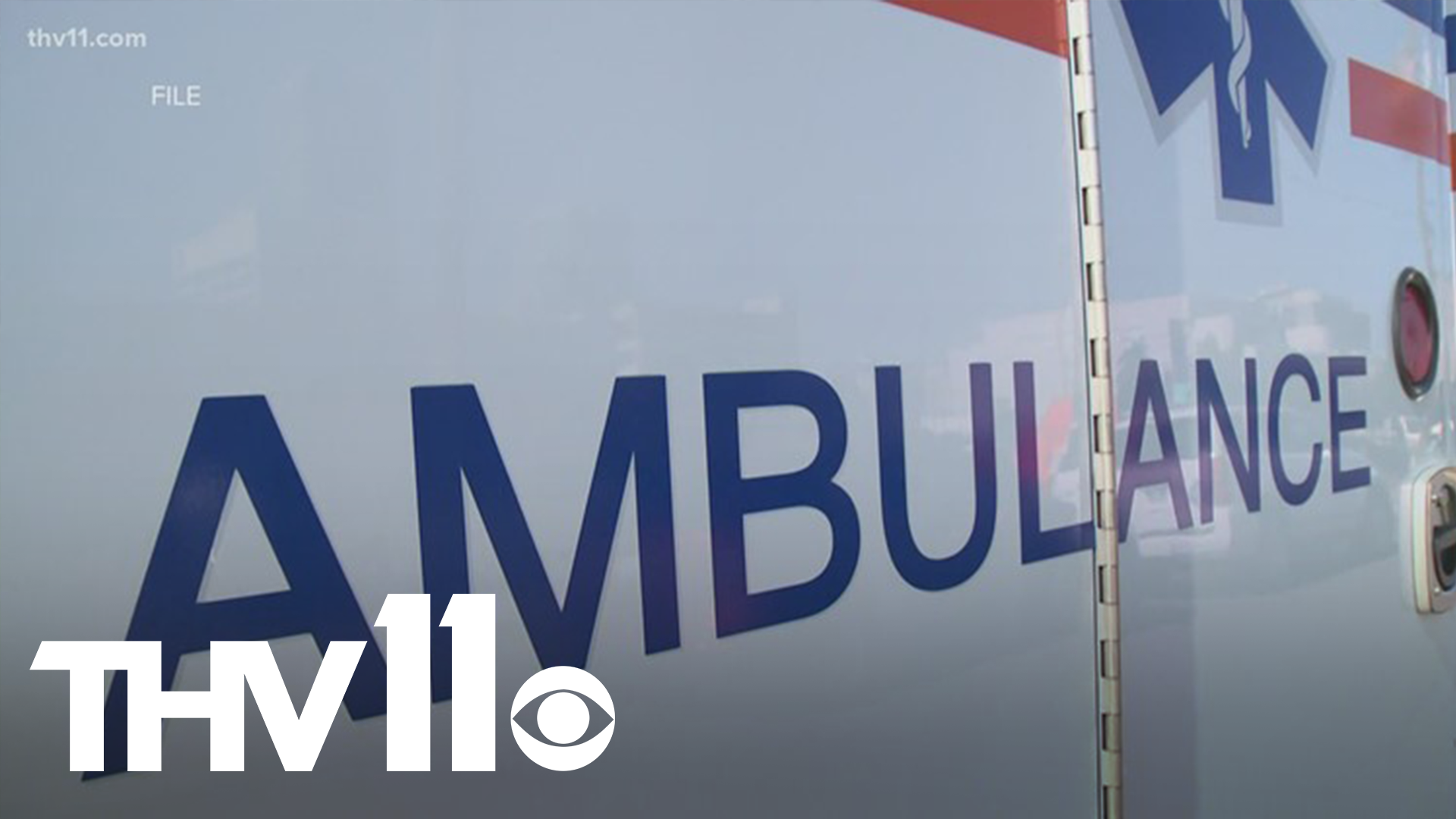LITTLE ROCK, Ark. — Everyday, we hear about hospitals reaching their capacity or having to move around resources to care for patients.
This issue is trickling down and causing a strain on EMS providers across our state.
The pandemic has obviously been a challenge for all segments of healthcare and EMS is not immune to that.
While hospitals continue to fill up, Treasurer and Secretary of the Arkansas Ambulance Association Ken Kelley said unique challenges are being presented.
"It's concerning because it's something that we've trained for, prepared for, but maybe not to this level," he said.
As COVID-19 spreads rapidly across Arkansas, EMS providers are in what Kelley calls "a catch 22."
"Provide the service, also as well as, ensure we provide the highest level of care every time we respond," he said.
According to Kelley, since the pandemic hit their industry has had two main challenges: an increase in calls related to COVID-19 patients and patients calling for help, but reluctant about going to the hospital.
"It puts an added stress on our EMS teams to know we need to provide treatment for the patients, but they're opting not to go to the hospital in many circumstances," he said.
In some instances, Kelley said once ambulances get to the hospital they are waiting over three hours to get the patient inside.
He also added that the low number of beds is causing them to transport non-emergency patients across state lines.
"Since Christmas Eve, we've had to transport patients from Northeast Arkansas to as far away as St. Louis and Springfield, Missouri," Kelley said.
UAMS Chief Clinical Officer Rawle SeuPaul said he's nervous for the weeks to come because they have several more weeks of increasing volumes of COVID-19 patients.
"We are pretty much, on a daily basis, at capacity," he said.
Even though that isn't unusual for UAMS, it still worries Dr. SeuPaul.
"My concern is that, it's not just UAMS, it's all the hospitals across our state that are really pushing their limits in terms of capacity," he said.
Since UAMS is at its max, they aren't able to take any transfer patients, which Dr. SeuPaul feels is a major setback.
"Every time we move away from that because of our capacity issue or we can't satisfy that part of our mission on a given date, I consider that to be a failure," he said.
Another major concern for EMS providers right now is funding. Kelley said less than 1% of funding has been provided to EMS for PPE or to pay their workforce. He hopes the community can help them out.
Since the pandemic started, Kelley also said EMS workforce issues have been a major problem.
He said they have lost about one-third of their workforce, which is leaving some paramedics to work shifts that last up to 96 hours before they can take a day off.

